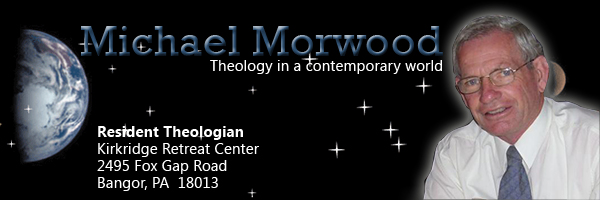Finding God, always and everywhere in the New Story Michael Morwood
Throughout human history people have used the prevailing worldview as their “window” for understanding the spiritual dimensions of life. These spiritual dimensions touch on questions of meaning, of connectedness, of where we came from, of what happens when we die, of what powers or spirits greater than us ultimately control the world in which we live.
It was natural for the Hebrew people to develop their notion of the One and Only God in a worldview that imagined gods living in the heavens above a flat earth – which was the center of the universe. Their God ruled from heaven and controlled whatever happened on earth from above. Like other peoples around the world, they used this prescientific understanding to address their fundamental spiritual questions, including the origin of humanity and the cause of suffering.
But worldviews change. And here we are in the 21st century with clear evidence that the earth is not flat, that earth is not the center of the universe, that the human species did not emerge into a state of paradise and that God does not live above Australia or Israel or any other country.
Our contemporary worldview has a wonderful scientific story to tell. It is a “window” to the mystery of God the likes of which human have never seen through before. And what a window! Through this window we see thousands of galaxies captured in one photo; we see stunning images of galaxies that contain billions of stars; we see documentaries revealing to us the mind-boggling wonder of the universe in its age, size, complexity, diversity, and development. We see our planet as never seen before, whether seen from outer space or captured on film, close-up, in its extraordinary uniqueness and beauty.
This window reveals the universe and life on this planet unfolding through patterns of attraction and co-operation, and through units working with other units to produce realities beyond themselves.
We use this window to throw light on the mystery that is God and we find ourselves challenged to expand our notions of “God” beyond the ancient idea of a male deity ruling from the heavens. We are challenged to find a meaningful and coherent way to talk about “God” in the context of a continually expanding and evolving universe. The good news is that when we accept the challenge we find an understanding of “God” that has always been part of the Christian tradition. We were even taught it – and believed it – when we were children: “God” is an everywhere reality. “God” is everywhere as the Presence holding everything in existence and in relationship. And we need to keep remembering what we have always heard: that “God” is totally and utterly Mystery beyond all human concepts and images.
Immersed in the wonder of this “new story” that our contemporary worldview provides, we are led into an equally wonderful story about ourselves as a life form that gives human expression to the universe and to the mystery we call “God”. As people of faith, we are led to the astonishing conclusion – that Jesus yearned for us to see and grasp – that we give human expression to the mystery we call “God”.
There is tension, however, in embracing this “new story” because religiously we find ourselves caught between two “stories” about God, Jesus and ourselves.
One is a theological story, shaped in the worldview of two thousand years ago. This story focuses on God as an elsewhere presence who banished humanity, and focuses on Jesus as someone who won back humanity’s access to God’s presence. It speaks the language of disconnection and “exile from God” and looks to the “next life” as the real meeting place with God. Its teaching on central issues of faith, such as revelation, prayer, sacraments and the role of the Church in the world focuses more on an elsewhere, interventionist God than on God as Breath and Presence in all that exists.
The other story, the “new story” focuses on God as the ground of all being, the sustainer of all that is; God is everywhere. It focuses on the wonder of all reality, and the wonder of the human species as a life-form that gives expression to the Divine, present and active throughout the universe. It tells us we are connected with everyone and everything IN God. This is the story the mystics tell. It is the story of connection, intimacy, wonder, appreciation and response. This story, too, brings its own particular focus to and understanding of Christology, revelation, prayer, sacraments and the role of the Church in the world – and part of our challenge today is to articulate and put into practice what that understanding may be.
The belief that God is “everywhere” is not new. What is new is today’s scientific worldview that gives a magnificent “window” for us to expand our understanding and appreciation of “everywhere” that includes the vastness of the universe, the wonder of life on this planet, the interconnection of everything that exists, the wonder and dignity of being human, and what it means to be “neighbor”. God is indeed everywhere. This is today’s context for spirituality, for theology, and for being Christian.
